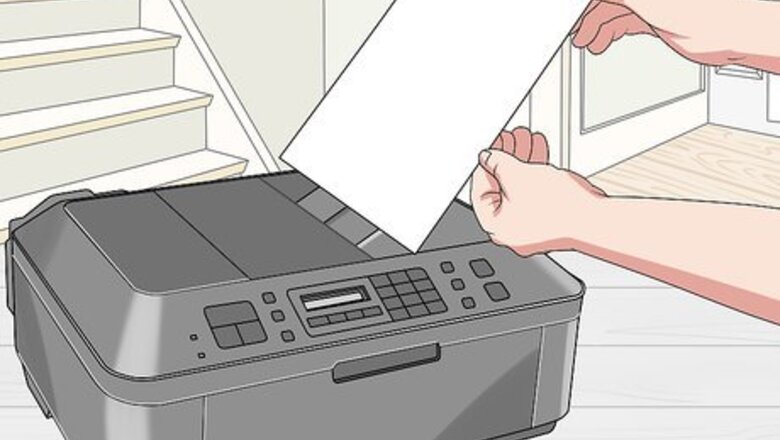
views
Mod Podging Laser Photos

Print your photo onto regular paper. Avoid using photo paper; it is too thick, and there's that the colors may run. You can try using this method on regular photos as well, but be aware that you may damage them.
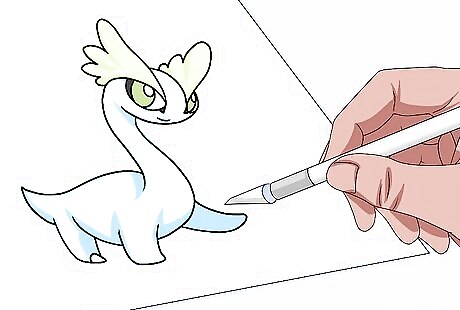
Trim the photo down as desired. Trace the side of the item onto the photo first, if needed. Next, cut the photo down with a paper slicer or a metal ruler and craft blade.
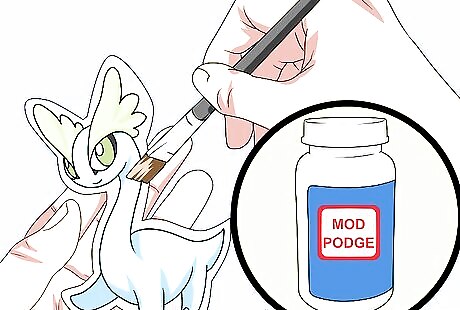
Brush some Mod Podge to the item. You can do this using a foam brush or a wide, flat paintbrush. If you want to, you can also brush the Mod Podge onto the back of the photo as well.
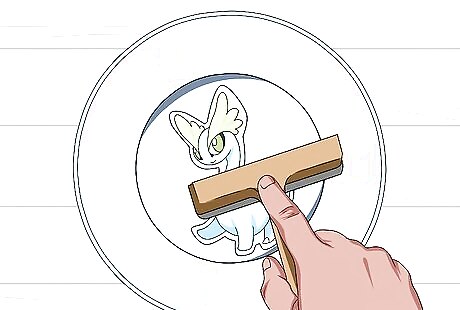
Press the photo face-up onto the item. Smooth the paper out with a rubber roller or a brayer to smooth the photo down. Start from the center of the photo and roll your way outwards. Ensure that there are no wrinkles or bubbles.

Apply a thin coat of Mod Podge on top of the photo. Extend the Mod Podge past the edges of the photo to help seal it in. Don't worry, you will be adding more coat of Mod Podge on top.
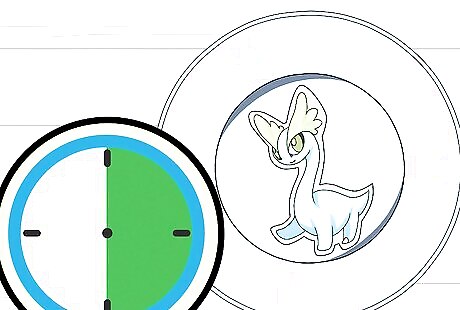
Allow the Mod Podge dry before adding a second coat of Mod Podge. Wait for about 30 minutes, then brush on a second coat of Mod Podge. If need to add a third coat, let the second one dry first.
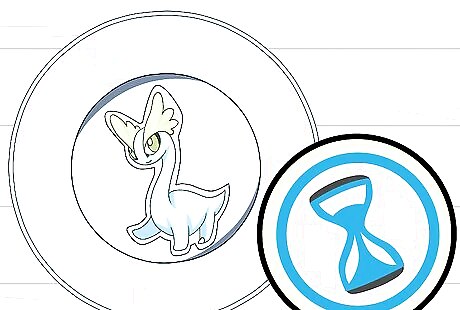
Allow the Mod Podge to dry completely. This will take anywhere from a few hours to several days, depending what you used. Read the label on your bottle to be sure. Once the Mod Podge has dried, you can display your project. If you are going to apply photos to the other sides of your item, now is the time to do so.
Mod Podging Inkjet Photos
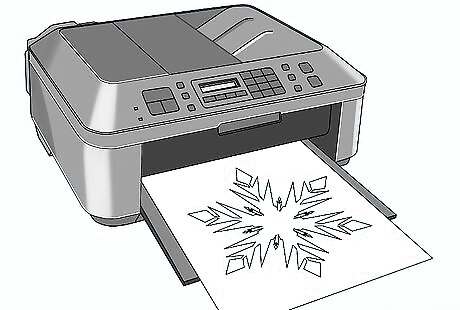
Print the photo onto regular paper. Do not use photo paper as it is too thick; the coating may also interfere with the Mod Podge.

Allow the ink to dry completely. This will take at least 10 minutes. If you move onto the next step too soon, the ink may run and bleed.
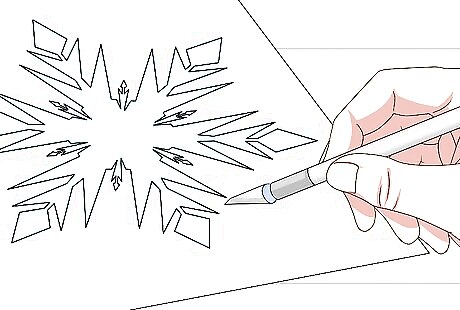
Trim the photo down as desired. Do this with a paper slicer or a metal ruler and a craft blade. If you need to, trace your item onto the photo first, then cut the photo out.
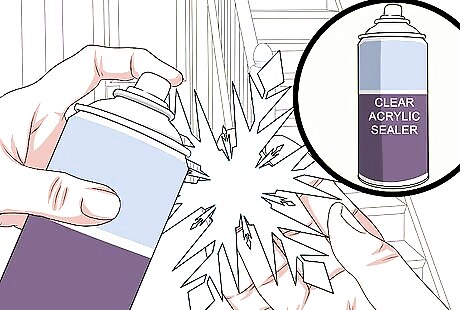
Coat both sides of the paper with clear, acrylic sealer. If you get inkjet paper wet, the ink will run. The clear, acrylic sealer will prevent this from happening. Spray both sides of the paper with 2 to 3 coats of clear, acrylic sealer. Let each coat/side dry completely before doing the next one. This step is time consuming, but the results are worth it. The finish (matte, glossy, or satin) does not matter because you will be Mod Podging over it.
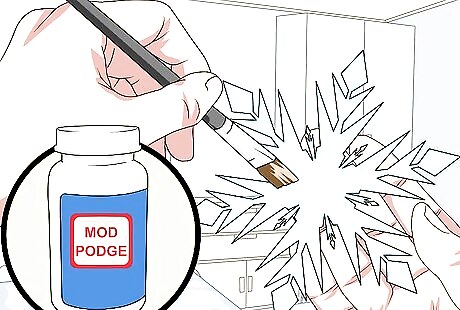
Apply a thin coat of Mod Podge to both sides of the paper. Paint the Mod Podge onto the front of the photo first, then let it dry. Flip the photo over, paint the back, then let it dry as well. You can do this with a wide paintbrush or a foam brush.
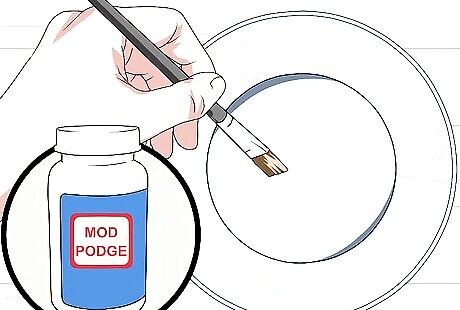
Apply some Mod Podge to the item. You can do this with a wide, flat paintbrush or a foam brush. If you want to, you can apply the Mod Podge to the back of the photo as well. If you are going to Mod Podge photos onto multiple sides, start with just one side for now.
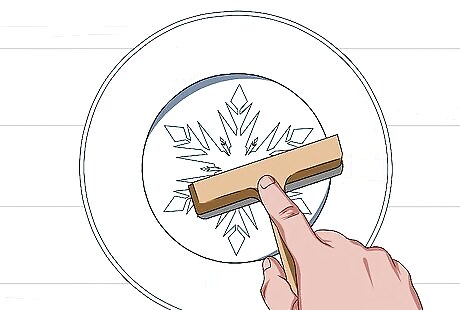
Press the photo face-up onto the object. Use a rubber roller or a brayer to smooth the photo down. Start from the middle of the photo and work your way outwards. Make sure that there are no bubbles or wrinkles.
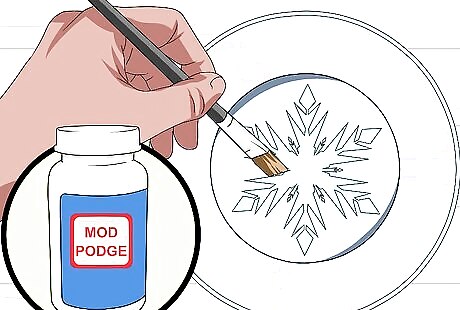
Apply another coat of Mod Podge on top. Keep this coat of Mod Podge light and thin. Be sure to extend the Mod Podge past the edges of the photo; this will help seal it in.

Let the project dry before applying another coat of Mod Podge. Let the project dry for about 30 minutes first, then apply another coat of Mod Podge. If you want to, you can apply a third coat, but let the second one dry first.
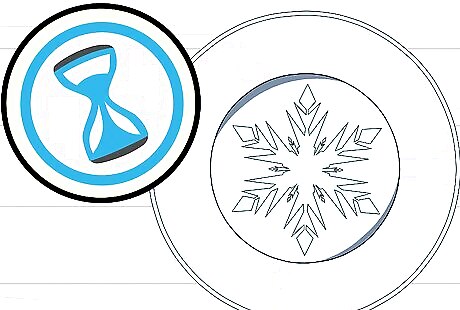
Allow the Mod Podge to dry completely. This can take a few hours to several days, depending on the type you used. Check the label on your bottle to be certain. Once the Mod Podge is dry, you can display your project, or apply photo to the other sides (if you are Mod Podging a box or block).
Transferring Photos
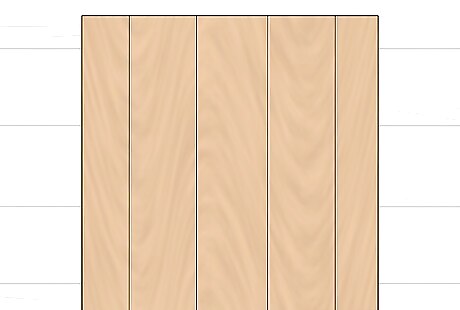
Choose a surface to transfer the image to. Wood surfaces are the most popular, but you can use natural/unglazed tile, fabric, and canvas as well. Unlike in the previous methods, you won't be gluing down the paper itself; you'll be transferring just the image. The transferred image will not be perfect. It will have a worn, chipped, vintage-y feel to it. Many people find that this adds a certain charm.
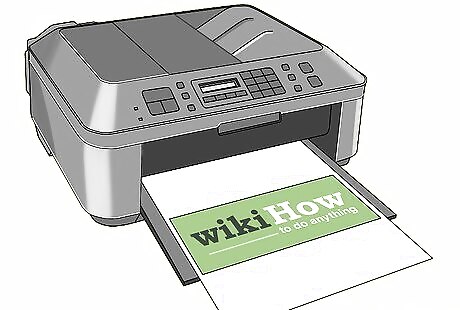
Print your image out using a laser printer for best results. Do not use an inkjet printer, or the ink will smear. Be aware that the image will come out in reverse after you transfer it. If this bothers you, mirror the image using an image editing program first. If you don't have access to a laser printer, you can try using an inkjet printer with a dry toner.
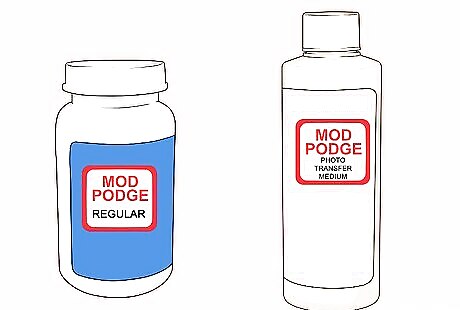
Decide between regular Mod Podge or Mod Podge Transfer Medium. Regular matte Mod Podge will make the image translucent so that the surface's texture (ie: wood grain) will show through the photo. Mod Podge Transfer Medium is white, and it will make the photo opaque. If you are using fabric, choose Mod Podge Transfer Medium.

Cut the image down to the size you want. If the image has a white border on it, be aware that the boarder will show up after you transfer it. If you don't want this white border, cut it off. Use a metal ruler and a craft blade for sharp, clean lines. You can also use a paper slicer instead.
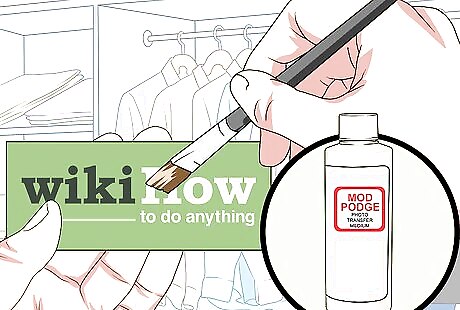
Apply the Mod Podge to the front of the image. Set the image face up on top of a sheet of paper—a silicone mat would be better. Apply the Mod Podge using a foam brush. Make sure that you coat the image thickly and evenly.

Place the image face-down onto your desired surface. Smooth it don using a rubber roller or brayer. If any Mod Podge leaks out from under the image, wipe it off immediately.
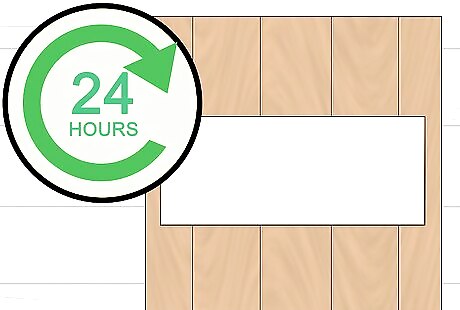
Allow the project to dry for 24 hours. This may seem like a long time, but the paper must be fully dry before you move onto the next step. If you get impatient and move on too soon, the image may not transfer properly.

Wet the paper, then rub it off. Dampen the back of the paper with a wet sponge or towel. Gently rub off the paper backing using your finger. Take your time and go slowly. As you rub the backing away, the image will begin to appear! Don't rub too hard, or you will rub the actual image off. Repeat the process if there is any paper residue stuck to the transferred image.
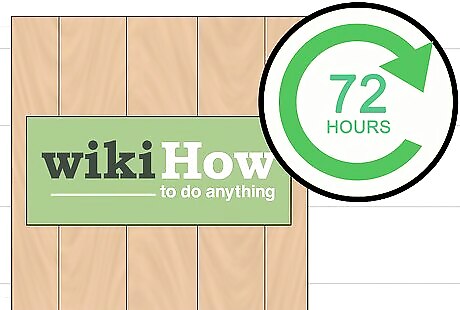
Allow the project to dry for 72 hours. This will give the Mod Podge enough time to cure. If you move ahead too soon, you will risk the surface getting tacky. For a more vintage-y touch, lightly sand the edges of the image before you seal it.
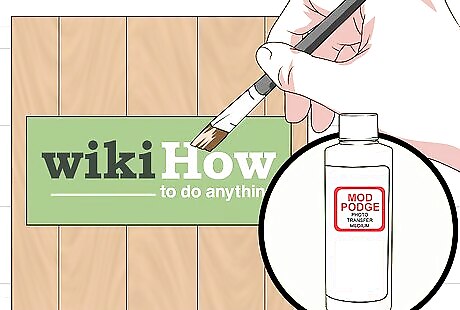
Seal the project. You seal it with regular Mod Podge or with a clear, acrylic sealer spray. Let the sealer dry completely before using the project. This could take a few hours to a couple of days depending on what you used. Use a clear, acrylic sealer for fabric. You can wash fabric as long as you follow the directions on the Mod Podge Transfer Medium bottle.
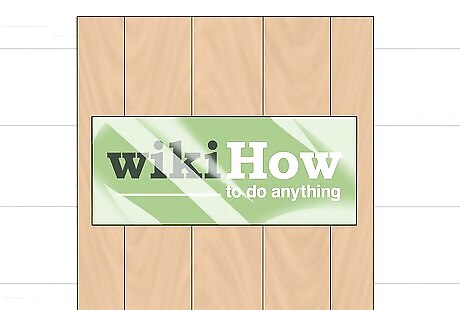
Finished.
















Comments
0 comment